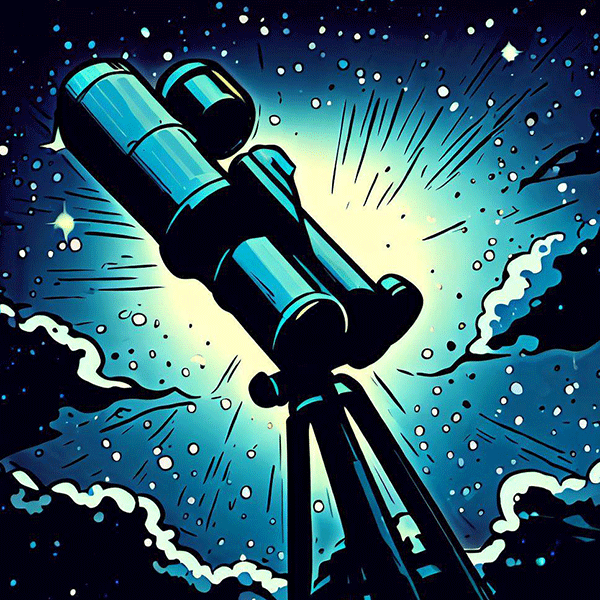Telescopes: The Universe’s Super Magnifying Glasses
Think of a telescope as a ginormous magnifying glass that lets us sneak peeks at the universe’s far-off, twinkling treasures. Since their invention, telescopes have become the nosy neighbours of astronomers, enabling us to snoop on the vast universe.
A Blast from the Past: The Tale of Telescopes
The first known practical telescopes were whipped up in the 17th century by a Dutch scientist named Hans Lippershey. But it was the Italian whizz Galileo Galilei who took the telescope and supercharged it! He used it to make mind-boggling observations, like discovering that Jupiter has moons!
How Does a Telescope Work? It’s a Light Fiesta!
A telescope’s main job is to be a light hog. It does this using a huge lens or mirror, known as the objective. This big guy collects light from distant objects and focuses it into a point. Then, a smaller lens, known as the eyepiece, magnifies this light, letting us see the object in high-def detail. It’s like having eagle eyes!
The Many Hats of Telescopes
Telescopes come in all shapes and sizes, each with their own party tricks:
- Refracting Telescopes: These use lenses to gather and focus light. They’re excellent for moon-gazing, planet-peeping, and checking out other objects within our solar system.
- Reflecting Telescopes: These fellas use mirrors instead of lenses. They’re often used for exploring galaxies and nebulae because they can hoover up more light and provide a sharper image.
- Radio Telescopes: Unlike their optical cousins, radio telescopes tune into the radio waves from space. They let us study cosmic phenomena that are invisible to our eyes, like pulsars and cosmic microwave background radiation.
- Space Telescopes: These are the lucky telescopes that got a one-way ticket to space to avoid Earth’s atmosphere’s distortions. The Hubble Space Telescope is a famous example.
Why Do We Care about Telescopes?
Telescopes have opened our eyes wide to the wonders of the universe. They’ve shown us Saturn’s rings, the moon’s craters, distant galaxies, and even evidence of black holes.
What’s Next for Telescopes?
As our tech gets more advanced, so do our telescopes. Future telescopes, like the James Webb Space Telescope, will be able to see further into the universe and in more detail than ever before. Who knows what incredible secrets of the universe are waiting for us?
